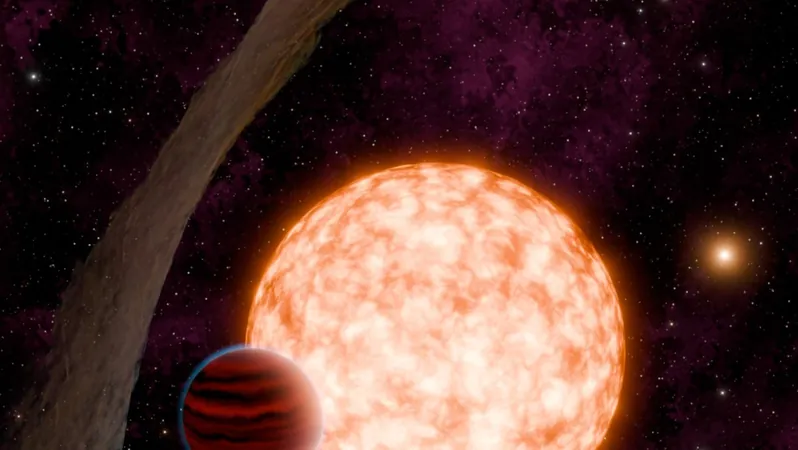
Discover the Universe's Youngest Planet: A Cosmic Baby Just 3 Million Years Old!
2024-11-27
Author: Kai
A Remarkable Discovery
In a remarkable discovery that has astrophysicists buzzing, a team from the University of North Carolina has identified what may very well be the youngest planet ever observed in the cosmos—formed just 3 million years ago. While this might seem ancient in human terms, in astronomical timeframes, it’s akin to a newborn taking its first steps.
Located approximately 430 light-years away from Earth in the ever-busy Taurus Molecular Cloud—a stellar nursery teeming with new star formations—this planet, officially designated IRAS 04125+2902 b (commonly referred to as TIDYE-1b), is still in its formative years. This discovery not only propels our understanding of planet formation into new territory but also invites fascinating questions about the dynamics of the universe.
Planetary Construction: A Lesson from TIDYE-1b
The birth of TIDYE-1b is particularly intriguing when we compare it to older planetary bodies. The oldest known planet exists at an astonishing 12.7 billion years old, nearly three times older than our own Earth, which formed 4.5 billion years ago. Researchers in a study published in Nature have suggested that the rapid formation of TIDYE-1b—completed in just a small fraction of the time taken by our Earth—challenges existing theories about how planets evolve.
Madyson Barber, the lead author of the study, emphasized the invaluable insights this discovery provides. “Discovering planets like this one allows us to look back in time, catching a glimpse of planetary formation as it happens,” she explained. Such a look reshapes our grasp of planetary development and hints at processes that differ from those seen in our own solar system.
A Unique Environment
The peculiar circumstances surrounding TIDYE-1b's formation have astounded researchers. Unlike many planets that develop in aligned, flat discs of gas and dust—like the planetary arrangement in our solar system—TIDYE-1b resides in a tilted debris disk. This unexpected misalignment offers clues that may lead to groundbreaking revelations about how planets can form in unique environments.
Despite its size being comparable to Jupiter, TIDYE-1b exhibits a lower density, indicating a possibly inflated atmosphere that may change over time. This inflation suggests that the planet could either evolve into a mini-Neptune or develop into a rocky super-Earth, adding further complexity to our understanding of planetary types.
What Lies Ahead for TIDYE-1b?
Excitingly, researchers plan to continue their observations of TIDYE-1b, aiming to discern more about its atmosphere and its relationship with the surrounding debris disk. Understanding how its environment impacts its growth, and whether it is still gaining mass or experiencing atmospheric loss due to its host star, will be key in the ongoing study of this cosmic gem.
The discovery of TIDYE-1b beckons a bright future for astronomical studies, pushing the boundaries of how we understand planet formation and the diversity of celestial bodies in our universe. As we unravel the mysteries behind this infant planet, we may just unlock secrets that redefine our place in the cosmos.
Stay tuned for more groundbreaking discoveries as astronomers continue their quest to explore the final frontiers of space!


 Brasil (PT)
Brasil (PT)
 Canada (EN)
Canada (EN)
 Chile (ES)
Chile (ES)
 España (ES)
España (ES)
 France (FR)
France (FR)
 Hong Kong (EN)
Hong Kong (EN)
 Italia (IT)
Italia (IT)
 日本 (JA)
日本 (JA)
 Magyarország (HU)
Magyarország (HU)
 Norge (NO)
Norge (NO)
 Polska (PL)
Polska (PL)
 Schweiz (DE)
Schweiz (DE)
 Singapore (EN)
Singapore (EN)
 Sverige (SV)
Sverige (SV)
 Suomi (FI)
Suomi (FI)
 Türkiye (TR)
Türkiye (TR)